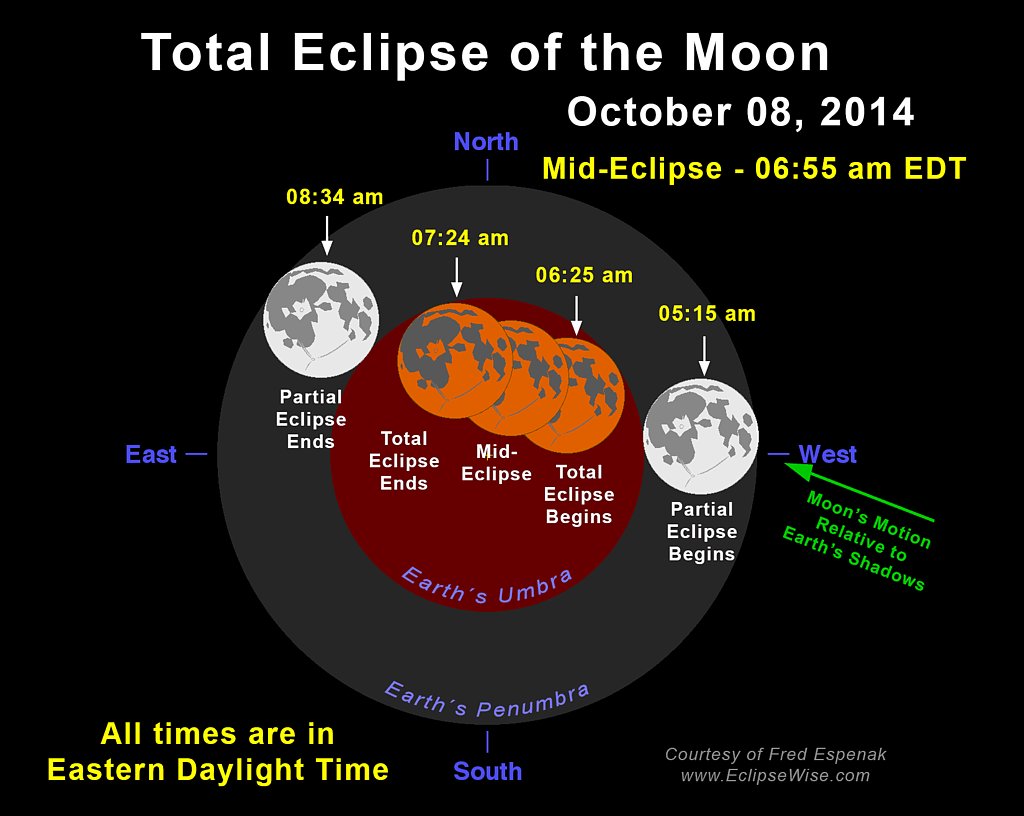The Lunar Eclipse Blood Moon Is a Sight You Can't Miss
Early tomorrow morning, at approximately 3:25 a.m. PDT/6:25 a.m. EDT, the moon will align with the Earth and sun, resulting in a spectacular crimson-colored sight called the blood moon. Oct. 8's total lunar eclipse is the third of four eclipses this year (April 15, April 29, Oct. 8, and Oct. 23) — and most of North America can see it, a rarity according to NASA. In fact, before the 20th century, lunar eclipses occurring with this frequency (called a tetrad) had not taken place for 300 years!
:upscale()/2014/04/14/765/n/1922507/706b2bb08aee86d0_135453098.jpg)
How long will it last?
The "blood moon" will last about an hour. It'll begin when the moon begins to pass behind the Earth. You will see the Earth's shadow pass slowly across the moon's surface.
Who will see it?
Most of North and South America will experience the entire eclipse, although clouds and rain might limit viewing in the northeastern US. Australia and much of Asia will also get to see it. The places missing out? Europe, Africa, and the eastern tip of Brazil.
When does it start?
The moon will begin to move into Earth's penumbra shadow at 12 a.m. PDT/3 a.m. EDT, but viewers won't see the "blood moon" until an hour after that. For a precise time of when to look to the sky in your region, check the Navy's lunar eclipse calculator.
 Source: Mr. Eclipse
Source: Mr. Eclipse
Why is it red?
During a total lunar eclipse, the Earth stands between the sun and moon. Some sunlight passes through the Earth's atmosphere, which filters out the blue rays, leaving behind only deep red or orange light.